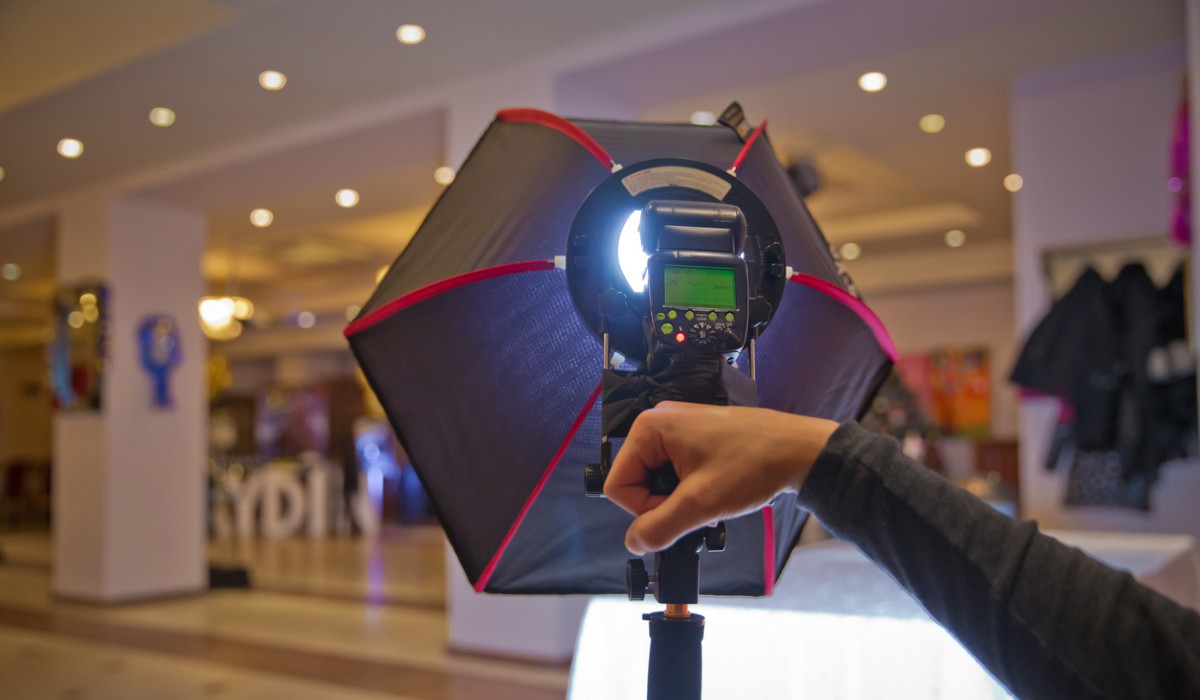A Guide To Improving Your Photography with Speedlight

If you’re serious about improving your photography skills, then you’ve probably considered investing in some professional lighting equipment. Speedlights are one of the most popular options for professional photographers, offering an efficient and versatile way to get the lighting you need. In this comprehensive guide, we’ll show you how to use a speedlight to take your photography to the next level.
We’ll discuss the basics of a speedlight, from the types available to how to choose the right one for your needs. Then, we’ll move on to the more advanced concepts, like tips and tricks for getting the best lighting effects. You’ll also find a section dedicated to troubleshooting in case you ever run into any issues with your speedlight.
What Is a Speedlight?
Speedlight is an external flash unit that contains a high-powered xenon lamp. It connects to either your camera or a separate light stand and provides a bright light source for photography in low-light situations. While speedlights are often referred to as “flash units,” they provide a continuous light source when used in manual mode.
Benefits of Using Speedlight
One of the biggest benefits of using speedlights is their affordability. They are much cheaper than dedicated studio lights and offer comparable results in many circumstances. This makes them a great option for photographers on a budget looking to get good-quality photos with professional results.
Speedlights are incredibly lightweight and portable, which makes them highly flexible and perfect for taking on location with you when shooting outdoors or in other places where space may be limited. Speedlights can be mounted directly onto your camera or attached to a separate light stand for off-camera lighting scenarios.
Speedlights also give users an incredible amount of control over their lighting conditions, which isn’t always possible with natural lighting or even studio lighting set-ups. With the ability to adjust power output, recycle times, and zoom range, speedlights allow users to create highly specific and creative lighting scenarios with ease.
How To Use Speedlight
Mounting Your Speedlight
When mounting a speedlight onto your camera’s hot shoe, be sure to line up all the contacts that are located inside each slot before securing it into place with the locking lever or screw provided with your camera model or specific speedlight model respectively.
If you want to use your speedlight’s off-camera flash style, there are plenty of accessories available that allow you to do this easily and securely. These include mounting brackets, umbrellas, and light stands. This type of setup gives you much more control over lighting angle than when using direct flash.
Using the Manual Flash Settings
To get the best results from your speedlights you must understand how to use them in manual mode correctly so that you can manually adjust power output, recycle time, and other settings according to your preferences and desired result rather than relying on automatic settings.
A good way to start learning how to use manual flash settings efficiently is by practicing in short burst sessions using minimal equipment, such as one speedlight and one reflector. When you feel more comfortable, you can use more equipment like multiple flashes and modifiers.
Understanding Bounce Flash
Bounce flash is a unique feature of speedlight since it leaves room for more creative flexibility by allowing users to manipulate light direction by bouncing it off walls, ceilings, or other surfaces nearby. Understanding how bounce flash works not only helps you get better results but also gives you an understanding of how ambient light works when shooting outdoors.
Accessories To Make the Most of Speedlight
Diffuser
A diffuser is an essential tool when using speedlights. They help soften harsh light, which can be unflattering on subjects and situations when shooting indoors, especially if you’re working within strict time constraints when there is no room for setting up complex lighting setups involving reflectors. Diffusers come in many different sizes, so make sure to do some research beforehand so you can determine what type best suits your needs for any given shoot.
Flash Brackets
Flash brackets are useful when shooting outdoors as they allow users to quickly mount their speedlights onto any object nearby so that they don’t have to move the equipment around. These brackets come in different sizes, so users can mount multiple flash units if needed without taking up too much space.
Softbox
Softboxes are very handy when setting up complex indoor photo shoots involving multiple lights. They help evenly disperse light across large rooms or areas where direct flash might not always be suitable. Softboxes come in various shapes, making them perfect for any scenario, whether it be portraits or product photography. Having one ready beforehand is always recommended.
Final Thoughts
Speedlights are one of the best tools a photographer can have in their arsenal. With knowledge and practice, speedlights can create stunning photographs with many professional effects. We hope this comprehensive guide has provided you with enough information on speedlights so you can start taking your photography to the next level.
Your Trust, Our Core Commitment
At Rising Tech, earning and maintaining your trust is the cornerstone of our mission. We're dedicated to transparency, impartiality, and the relentless pursuit of truth in every article, review, and recommendation we publish. Our commitment to these principles ensures that you, our valued reader, are always equipped with reliable and unbiased information. Let us be your trusted guide in the ever-evolving world of technology.